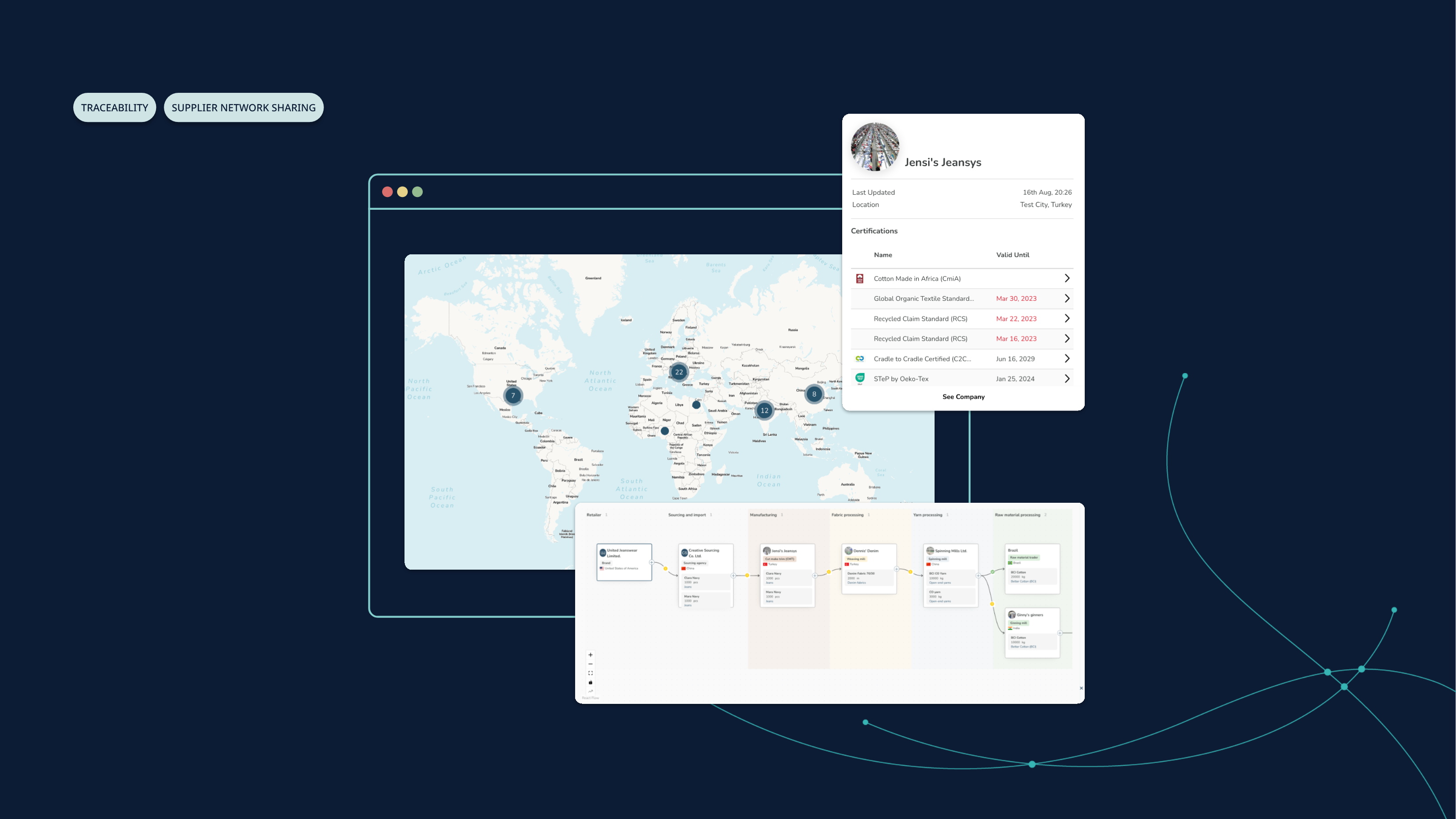Article: Navigating the shift in fashion: Embracing supplier sustainability assessments

Navigating the shift in fashion: Embracing supplier sustainability assessments
Sustainability has become part of the mainstream by now. Consumers want to know more and more about the products they buy. It is no longer enough to know what materials a product is made of. They also want to know how those materials were processed, by whom and under what conditions.
This wish for reliable information has also been recognized by Chief Procurement Officers as the McKinsey Apparel CPO Survey shows: 59% of sourcing executives expect to see an increase in the level of information on suppliers at the point of sale. A mere supplier list on the sustainability section of the website is not enough to answer consumers' questions.
This is a reminder that transparency is not an end in itself: Consumers are asking for more information at the point of sale to make informed decisions and they are asking for authentic information to be able to hold apparel brands and retailers accountable. In short, they want to know the supply chain. But it is not only end consumers who demand this knowledge about product sustainability; the societal expectations of the fashion industry increased and still do so.
Thus, sustainability requirements has reached stakeholders in deeper supply chains. Sustainability plays an increasingly important role in how fashion brands select their suppliers. Three out of five respondents in the McKinsey Apparel CPO Survey said sustainability would be a very important factor in their supplier ratings by 2025—up from only one in five who say it is today.
The consequence: Fashion brands upgrade their supplier ratings. They have moved away from viewing sustainability as a compliance-based hygiene factor and embrace more sophisticated models that assign different weights to a range of social and environmental sustainability criteria. Because to change a supply chain to a sustainable one really is, you need to know it inside out. To gain this knowledge about complex global supply chains, supplier sustainability assessments are the first choice for fashion brands.
5 reasons why fashion brands are using supplier sustainability assessments
There are, of course, more than five reasons why fashion brands use this type of assessment. But in our experience, the following five are always leading the decision to implement this type of evaluation.
1. Compliance with minimum standards
Depending on country, culture and background there are various understandings of sustainability. A fashion brand from Germany has different standards in mind regarding sustainability that a supplier should fulfill than the supplier in a country of the global south. A supplier sustainability assessment with corresponding criteria enables both sides to have a common understanding of sustainability and what has to be fulfilled to reach this sustainability. Those criteria should be aligned with both companies mission and values, their social responsibility and cultural commitments.
In addition to the sustainability standards of the fashion brands and the suppliers, it is of course also important to meet the minimum standards of international and national laws and guidelines. A supplier sustainability assessment gives the opportunity to discuss these binding standards.
2. Detection of sustainability gaps and social issues
Since a supplier sustainability assessment determines which sustainability standards are important for a fashion brand, it is the perfect basis for recognizing when a supplier does not meet these standards. It makes it possible to identify and address social and environmental issues a supplier has, look for a solution together and implement feasible solutions. In this way, fashion brands can identify weak links in their supply chains at an early stage and figure out appropriate methods to make them strong.
3. Definition of improvement areas
The jointly defined understanding of sustainability also gives room to set sustainability targets. Since constantly switching suppliers in search of the cheapest offer is not sustainable as it costs time and money, sustainable supply chains are also about building long term partnerships with suppliers, as one apparel sourcing executive clearly stated in the McKinsey Apparel CPO Survey: A lot depends on having the right partners. Basing the supply chain on partnerships enables the possibility to improve these relationships and get more sustainable together. Therefore, fashion brands also use the Supplier Sustainability Assessments to drive continuous improvement.
And if these are holistically designed, are based on verifiable quantitative metrics and meaningful qualitative observations, nothing stands in the way in creating sustainable supply chains. Because evaluating is the key to find inefficiencies or possibilities for further growth - also in the area of sustainability.
4. Enabling communication
Supplier sustainability assessments are not a one-time task. Therefore, they offer the possibility of a communicative exchange. Fashion brands can specifically ask why a defined sustainability target was not met, what the reasons were and what could be changed to achieve it by the next assessment. Such an evaluation also gives suppliers the opportunity to ask why a certain sustainability standard is necessary or to make suggestions for change. This communication channel is important to sensitise the suppliers for sustainability and to build up an independent understanding.
After all, the goal of these assessments should not be to punish non-sustainability, but to cooperatively transform supply chains to a sustainable one. This collaborative aspect will be a trend to stay: For years, apparel companies have signaled their intent to move to closer partnerships with suppliers — including by emphasizing that the role of sourcing managers is changing from that of negotiators to relationship managers.
5. Creation of sustainability benchmarks
Supplier sustainability assessments help fashion brands in building a database of sustainable suppliers. This allows them to compare which supplier is the most suitable for new collections and products and to build a sustainable supply chain from the beginning. They can also see which measures have worked well to achieve certain sustainability goals and can apply them again.
Sustainable and transparent supply chains are not only in the interest of consumers. They are also the backbone of successful, responsible fashion brands. The global Corona pandemic has shown how important resilient supply chains are to survive such crises. For this you not only need suppliers but partners at your side who you know and share your values and world views with.
Since future crises of this magnitude will most likely become the norm due to foreseeable actors like climate change and political unrest, it is time to position yourself crisis-proof. Supplier sustainability assessments help to find like-minded suppliers for making supply chains sustainable. With this reliable process and careful screening future risks can be avoided while building a strong network of loyal partners.
